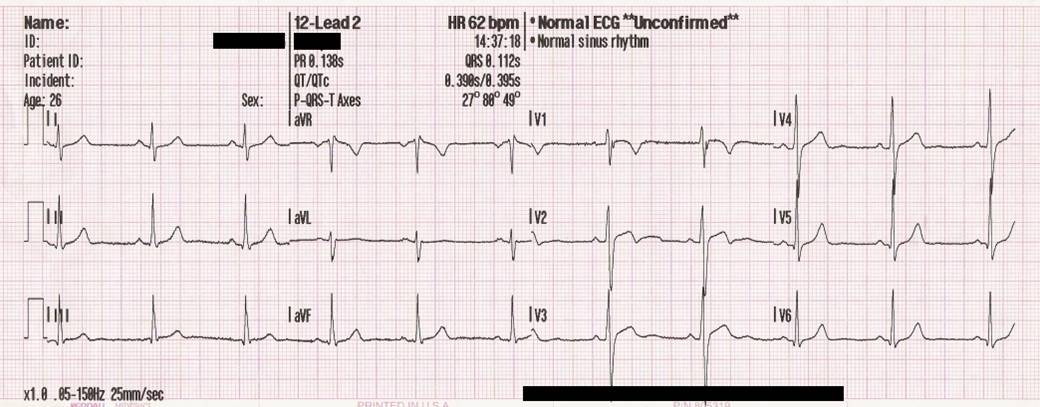Hello! This is a new series of posts regarding my ultra-low-cost electrocardiogram (ECG), Systolic.
Introduction
To those who don’t know, an ECG is a device used for the diagnosis and treatment of cardiac abnormalities, such as cardiac arrhythmias. An ECG shows voltage (in millivolts) on the y-axis and time (often in milliseconds) on the x-axis. Through this graph, an ECG can show the full electrical activity during the cardiac cycle: atrial systole (contraction), ventricular systole, and cardiac diastole (relaxation).
To do this, electrodes are placed on the skin. The amount and position of these electrodes depends on the amount of leads the ECG uses. For example, there are commonly 2-lead, 6-lead, and 12-lead ECGs. 2-lead ECGs use 2 electrodes, 6-lead ECGs use 4 to 6 electrodes, and 12-lead ECGs use 10 electrodes. The additional leads are used to get different “perspectives” on the heart’s electrical activity, for example a 12-lead ECG can be used to diagnose different types of heart condition. 12-lead ECGs are commonly found in hospitals, whereas 6-lead ECGs can be very portable, such as AliveCor®’s innovative FDA-approved KardiaMobile 6L. At the time of writing this blog, the KardiaMobile 6L device costs 149.00 GBP.
 By MoodyGroove – 2007-01-24 (original upload date) Original uploader was MoodyGroove at en.wikipedia, Public Domain, https://commons.wikimedia.org/w/index.php?curid=5266589
By MoodyGroove – 2007-01-24 (original upload date) Original uploader was MoodyGroove at en.wikipedia, Public Domain, https://commons.wikimedia.org/w/index.php?curid=5266589
I wanted to design an ECG that is not only cheaper, but more importantly, open-source. This means that anyone could view my design, spot critical flaws, design their own version, and so much more. That’s the beauty of open-sourced projects. One thing my design sadly cannot achieve, at least now, is approval from the Food and Drug Administration (FDA).
Consequently, my goal was to design an ECG that is portable, can be powered by a laptop, is cheap and as safe as I could design it. To allow use from a laptop, the ECG will be USB powered. To help make the device safe, isolation is required for the USB data and power. Additionally, mounting holes are necessary to design an enclosure for the ECG to allow it to be rugged for portable use. To help make the device as cheap as possible, I only used essential components for use and debugging (for the prototypes). It’s also critical that the ECG is reliable, and to help achieve this I added ESD protection on the USB input to prevent damage.
In the next post, I’ll go over component selection, which took a surprisingly long time for this project.